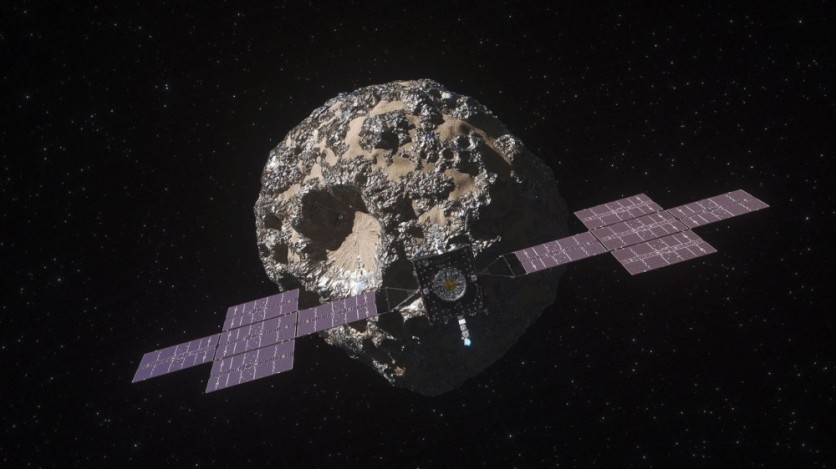Scientists have unlocked a groundbreaking method for mining metal-rich asteroids using a deep eutectic solvent (DES).
In their study, recently published in Scientific Reports, study lead Rodolfo Rivera and his team demonstrated the catalytic dissolution of metals from meteorite proxies of metal-rich asteroids.
This development promises to revolutionize the future of space mining.

The Potential of Extraterrestrial Mining
Extraterrestrial mining has long been a dream of space exploration.
Extracting precious metals and minerals from space objects like asteroids and bringing them back to Earth or employing them for in-situ resource utilization could drastically reduce the costs and environmental impacts of space missions.
Rivera's study opens the door to the efficient use of local materials, paving the way for future human settlements in space or on other celestial bodies.
The scientists focused on three types of meteorites: two chondrites (H3, H5) and one iron (IAB-MG) meteorite.
Chondrites are characterized by their silicate composition, rich in minerals such as olivine and pyroxene, but they also contain valuable metal-rich phases like native metal alloys, sulfides, and oxides. Among these, metallic iron-nickel and troilite (iron sulfide) were found to be the most abundant metal-bearing phases.
Read Also : Researchers Successfully Grow Mouse Embryos Aboard ISS, Confirming Mammals Can Thrive in Space
The Role of Deep Eutectic Solvents (DES)
The key to this innovative approach is the use of deep eutectic solvents. These solvents can be engineered with relatively low vapor pressures and can even be produced from organic waste products created in extraterrestrial settlements, making them highly suitable for space applications.
In their experiments, the scientists mixed choline chloride and ethylene glycol to create the DES, which served as the medium for the metal dissolution process.
Catalytic Dissolution
To extract metals from the meteorite proxies, the scientists subjected them to chemical micro-etching experiments. They used iodine and iron(III) chloride as oxidizing agents within the DES.
These experiments were conducted both before and after chemical etching, allowing the team to analyze the depth and dissolution rates.
The results were promising, showing that the Fe-Ni rich phases within the meteorite samples were effectively leached out while other mineral phases remained unreactive. This breakthrough could provide a blueprint for efficient metal extraction from space objects.
Prospects for Space Exploration
The implications of this study are far-reaching. Metal-rich asteroids are not only fascinating celestial bodies but also potential goldmines of resources that can fuel space exploration.
Near-Earth asteroids, for instance, contain valuable metals such as platinum group metals, iron, nickel, and cobalt in quantities greater than what we can find on Earth.
The asteroid signatures studied in this research are similar to asteroid 16 Psyche, the largest metal-rich body in our solar system - made from up to 60% iron and nickel.
A NASA probe has already left Earth back in October to reach Psyche.
Stay posted here at Tech Times.
Related Article : NASA's OSIRIS-REx Mission Surpasses Its Goal of Bringing 60 Grams of Asteroid Bennu Sample to Earth

ⓒ 2026 TECHTIMES.com All rights reserved. Do not reproduce without permission.




